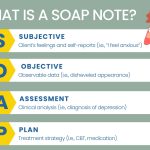By PatientNotes.Ai Editorial Team
18 March 2025
For healthcare practitioners in private practice, developing a consistent flow of new clients is paramount for sustainable growth. Among the various marketing strategies available, referrals stand out as particularly valuable—they bring pre-qualified clients who arrive with a level of trust already established.
This guide explores how to create and implement an effective referral strategy that will help your private practice thrive in today’s competitive healthcare landscape.
Why Referrals Matter for Your Practice Growth
Referrals represent more than just new clients—they reflect the confidence others place in your professional capabilities. Unlike cold marketing approaches, referred clients come with an implicit endorsement from someone they already trust, whether another healthcare professional or a satisfied client.
Research consistently shows that referred clients:
- Convert at higher rates than other marketing channels
- Require less convincing to book an initial appointment
- Often become loyal, long-term clients
- Are more likely to refer others themselves
For healthcare practitioners operating in a competitive environment, a steady stream of quality referrals can reduce marketing costs while simultaneously increasing practice stability.
Essential Components of an Effective Referral System
To harness the full potential of referrals for practice growth, you’ll need to establish a systematic approach. Three critical components form the foundation of any successful referral strategy:
1. Reliable Tracking of Referral Sources
Understanding precisely where your clients come from represents the cornerstone of an effective referral strategy. Without accurate tracking, you cannot identify which relationships and marketing efforts yield the best results.
Implement these tracking methods:
- Intake questionnaires: Include a specific question asking how clients discovered your practice
- Digital tracking: Configure your booking software to capture referral source information
- Follow-up conversations: Verify referral information during initial consultations
Many electronic health record (EHR) systems offer built-in functionality for tracking referral sources, making this process straightforward to implement and maintain.
2. Data Analysis Capabilities
Raw data about referrals becomes valuable only when transformed into actionable insights. The ability to analyse referral patterns allows you to:
- Identify which referral sources generate the most clients
- Determine which sources bring clients who align best with your clinical specialities
- Recognise seasonal or cyclical patterns in referral volume
- Spot emerging trends or changes in referral behaviour
Consider using practice management software that provides visual dashboards and reporting tools specifically designed for referral analysis.
3. Revenue Attribution Tracking
Perhaps the most insightful metric is understanding the financial impact of different referral sources. This goes beyond simply counting new clients to measure actual revenue generation.
Advanced referral tracking should help you determine:
- Total revenue generated from each referral source
- Average revenue per client from different referral channels
- Client retention rates by referral origin
- Return on investment for networking and relationship-building activities
Practice management platforms like SimplePractice offer Referral Sources Reports that can automatically calculate these figures, providing concrete data to guide your networking priorities.
Building Relationships with Clinical Referral Partners
While many practitioners view colleagues primarily as competitors, this perspective overlooks valuable collaborative opportunities. Fellow healthcare professionals can become your most consistent source of qualified referrals.
Identifying Potential Referral Partners
Begin by mapping the healthcare ecosystem surrounding your ideal client:
- Conduct local provider research: Identify practitioners who serve similar client demographics but offer complementary services
- Consider both in-person and virtual providers: Include telehealth practitioners in your outreach
- Look beyond your immediate specialty: Expand your network to include various healthcare disciplines that interact with your target client base
For example, if you specialise in anxiety treatment, potential referral partners might include GPs, psychiatrists, occupational therapists, nutritionists, and even yoga instructors or meditation coaches.
Cultivating Professional Relationships
Once you’ve identified potential partners, focus on building genuine professional connections:
- Arrange introductory meetings: Schedule brief video calls or coffee meetings to learn about each other’s practices
- Articulate your speciality clearly: Communicate precisely what types of clients you serve best
- Demonstrate your expertise: Share case studies (while maintaining confidentiality) or educational resources
- Establish two-way communication: Define preferred methods for case coordination and updates
- Express gratitude: Acknowledge referrals promptly with a personalised thank-you
Remember that referral relationships work best when reciprocal. Maintain a curated list of trusted professionals to whom you can refer clients when their needs fall outside your scope of practice.
Leveraging Existing Client Relationships
Satisfied clients represent another powerful referral channel that many practitioners underutilise.
Creating Referrable Experiences
The foundation of client referrals is exceptional care that exceeds expectations:
- Deliver outstanding clinical outcomes: Maintain the highest standards of clinical excellence
- Provide remarkable service: Ensure every interaction with your practice feels thoughtful and valuable
- Simplify administrative processes: Make booking, payment, and paperwork as frictionless as possible
- Communicate proactively: Keep clients informed and respond promptly to questions
- Personalise the experience: Remember details and preferences that make clients feel valued
When clients consistently receive care that goes beyond standard expectations, they naturally become advocates for your practice.
Tastefully Encouraging Referrals
While providing excellent care forms the foundation, most satisfied clients will need a gentle prompt to make referrals:
- Mention availability: During appropriate moments, casually mention that you’re accepting new clients
- Provide resources: Offer business cards or digital materials clients can easily share
- Request online reviews: Encourage satisfied clients to leave positive reviews on relevant platforms
- Implement a referral programme: Consider offering service discounts or complementary sessions for successful referrals
- Express appreciation: Always acknowledge and thank clients who refer others
The key is maintaining professional boundaries while making it easy for satisfied clients to share their positive experiences.
Analysing Referral Data to Optimise Your Strategy
A truly effective referral strategy evolves based on data-driven insights. Regular analysis allows you to refine your approach and allocate resources more efficiently.
Key Metrics to Monitor
Set aside time quarterly to review your referral performance, focusing on these key metrics:
- Referral volume by source: Track the number of new clients from each referral channel
- Conversion rates: Calculate what percentage of referrals convert to initial appointments
- Client retention: Analyse how long referred clients remain with your practice
- Revenue generation: Measure the financial impact of different referral sources
- Client-provider fit: Assess how well referred clients align with your clinical specialities
This analysis will reveal patterns that can guide your networking and relationship-building priorities.
Optimising Based on Data
Use your findings to refine your referral strategy:
- Double down on high-performers: Invest more time nurturing relationships with your most productive referral sources
- Address declining channels: Investigate and address any reduction in referrals from previously reliable sources
- Diversify strategically: Develop new referral partnerships in areas that complement your strongest sources
- Adjust messaging: Refine how you communicate your specialities based on the types of referrals that succeed
- Allocate resources wisely: Focus your networking time and energy where data shows the highest return
Remember that referral patterns may shift with changes in the healthcare landscape, client needs, or your own practice focus—making regular analysis essential.
Implementing Technology to Streamline Referral Management
Modern practice management systems offer powerful tools to simplify referral tracking and analysis.
Key Features to Consider
When evaluating technology solutions for referral management, look for these capabilities:
- Automated source tracking: Systems that capture referral information during the booking process
- Custom fields: The ability to add detailed information about referral relationships
- Visual reporting: Dashboards that display referral trends and patterns
- Revenue attribution: Tools that connect financial outcomes to referral sources
- Integration capabilities: Seamless connection with your clinical documentation and billing systems
Investing in the right technology can transform referral management from a manual chore to an automated insight generator.
Common Referral Strategy Pitfalls to Avoid
Even well-intentioned referral strategies can falter due to common mistakes:
- Focusing solely on volume: Prioritising quantity over quality of referrals can lead to poor client-provider fit
- Neglecting existing relationships: Failing to nurture established referral sources while pursuing new ones
- Inconsistent follow-up: Not acknowledging referrals or providing feedback to referring providers
- Poor tracking discipline: Collecting incomplete or inconsistent referral source information
- Overlooking client experience: Neglecting the fundamental client satisfaction that drives organic referrals
- One-sided relationships: Expecting continuous referrals without reciprocating when appropriate
Awareness of these common pitfalls allows you to develop safeguards within your referral system.
Case Study: A Successful Referral Strategy
Consider the example of a London-based dietitian who transformed her practice through a systematic referral approach:
After struggling with inconsistent client flow, she implemented a comprehensive referral strategy focusing on relationship-building with complementary healthcare providers. By tracking each referral source meticulously and analysing the resulting data quarterly, she identified that personal trainers and functional medicine practitioners referred clients who were particularly well-suited to her speciality in digestive health.
She deepened these strategic relationships by providing educational workshops for the staff at these practices and creating co-branded resources they could share with their clients. Additionally, she implemented a formal system for keeping referring providers updated on mutual clients’ progress (with appropriate consent).
Within 18 months, her practice grew from 60% to 85% capacity, with 73% of new clients coming through professional referrals. Most importantly, these referred clients showed higher completion rates for treatment protocols and generated 40% more revenue per client than those acquired through other marketing channels.
Creating Your Referral Action Plan
Based on the principles covered, here’s a step-by-step process to establish your referral strategy:
- Audit your current situation: Document existing referral sources and patterns
- Implement tracking systems: Establish reliable methods to capture referral information
- Map your ideal network: Identify complementary providers who serve your target client population
- Develop outreach materials: Create concise information about your specialities and ideal clients
- Schedule relationship-building activities: Plan regular connections with key referral partners
- Create feedback loops: Establish systems to keep referring providers appropriately informed
- Review and optimise quarterly: Analyse data and refine your approach based on findings
Remember that effective referral systems combine both art and science—relationship nurturing alongside data analysis.
Conclusion
A strategic approach to generating and managing referrals represents one of the most cost-effective ways to build a thriving private practice. By implementing systematic tracking, nurturing professional relationships, and regularly analysing performance data, you can create a sustainable flow of ideal clients who arrive pre-disposed to trust your expertise.
The most successful practitioners recognise that referrals aren’t simply a passive byproduct of good clinical work—they’re the result of intentional systems and relationship cultivation. With the right approach, referrals can become your practice’s primary growth engine, reducing marketing costs while simultaneously improving client outcomes through better provider-client matching.
Key Takeaways
- Implement systematic tracking of referral sources to identify which channels produce your best clients
- Build genuine relationships with complementary healthcare providers who serve your ideal client population
- Create remarkable client experiences that naturally encourage satisfied clients to refer others
- Regularly analyse referral data to optimise your networking efforts and resource allocation
- Remember that effective referral relationships are reciprocal, built on trust and mutual benefit
- Utilise practice management technology to streamline referral tracking and analysis
- Continuously refine your referral strategy based on performance data and changing practice needs
By PatientNotes.Ai Editorial Team
Last Updated: 18 March 2025



